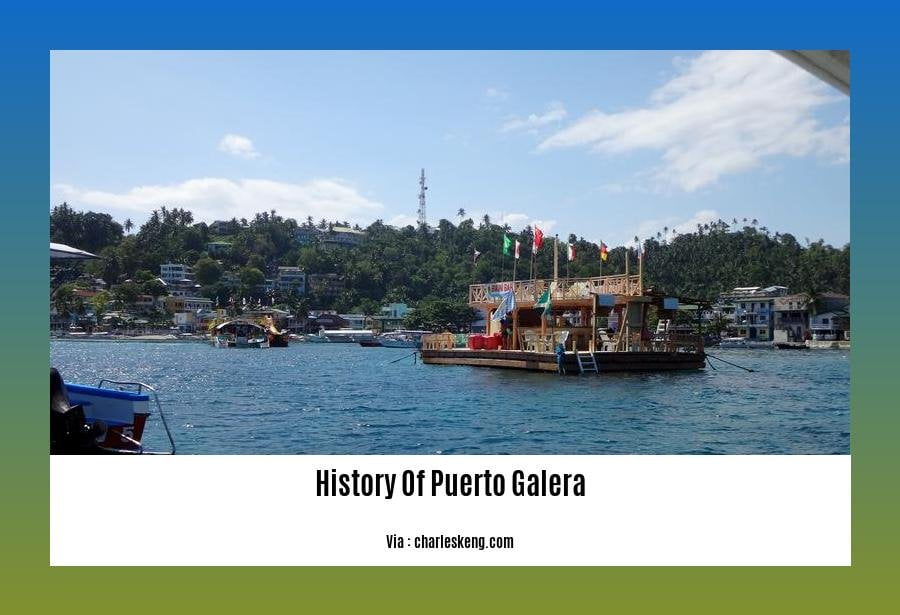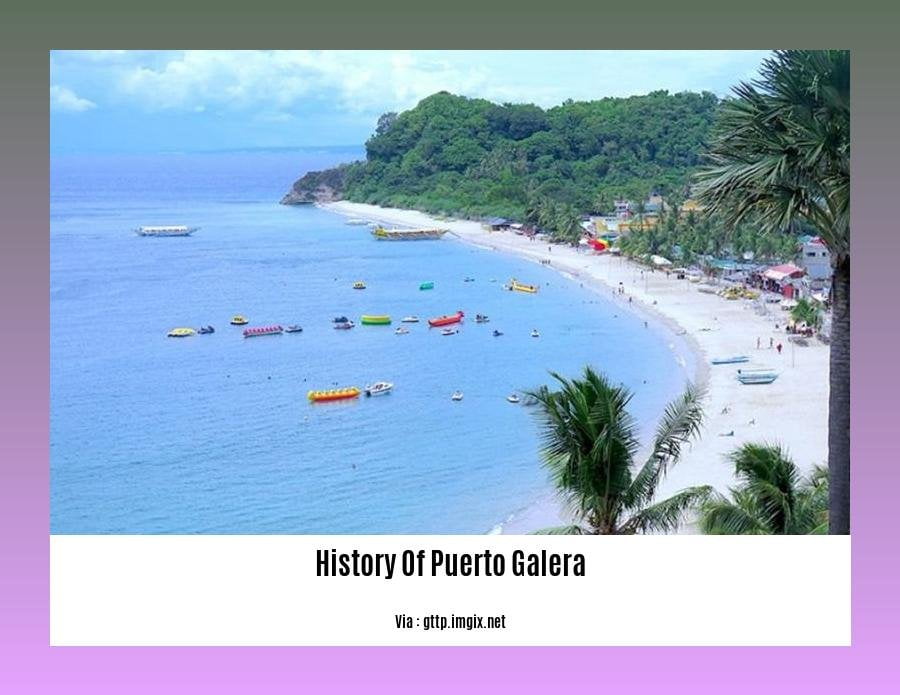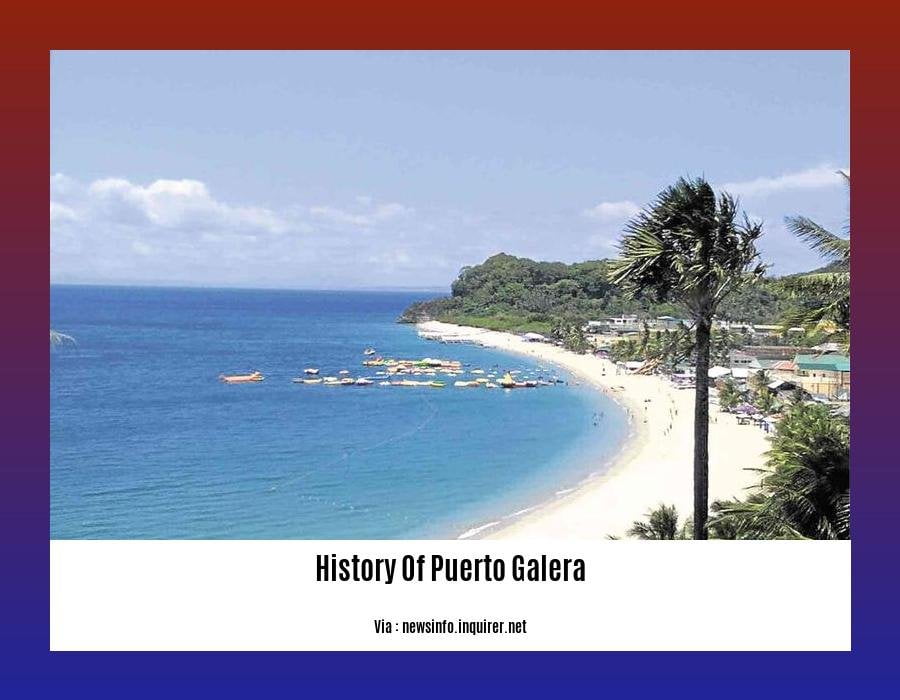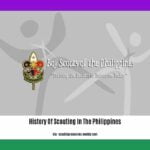Embark on a journey through time as we unveil the captivating history of Puerto Galera, a town nestled in the heart of the Philippines. [- Unveiling the History of Puerto Galera: A Cultural Tapestry of Indigenous, Spanish, and American Influences] takes you on an exploration of its rich heritage, where indigenous roots intertwine with Spanish and American influences to create a vibrant cultural tapestry. Prepare to be mesmerized as we delve into the stories that shaped this enchanting town, from its humble beginnings to its transformation into a popular tourist destination.
Key Takeaways:
Puerto Galera is a coastal town in the Philippines with a rich cultural heritage shaped by indigenous, Spanish, and American influences.
Its history dates back to the 10th century, serving as a trading port and harbor along vital trade routes.
Spanish colonization in the 1500s brought traders and missionaries, leaving a lasting impact on the town’s culture and religion.
In the 1890s, Puerto Galera was ceded to the United States under the Treaty of Paris, remaining under American control until 1946.
Post-World War II, Puerto Galera transformed into a popular tourist destination, renowned for its stunning beaches, vibrant coral reefs, and world-class diving spots.
History of Puerto Galera

Puerto Galera is a coastal town in the Philippines, located on the northern shore of Mindoro Island, boasting a rich tapestry of indigenous, Spanish, and American influences.
Indigenous Roots
The indigenous Mangyan people were the first inhabitants of Puerto Galera, leaving behind relics of their vibrant culture in the form of ancient petroglyphs and artifacts. These artworks, etched into cave walls, provide valuable insights into their beliefs, traditions, and connection to the natural world.
Arrival of the Spanish
In the 1500s, Puerto Galera caught the attention of Spanish colonizers. Recognized as an important trading port and strategic harbor, the town became a bustling center for commerce and missionary activity. Spanish influence can still be seen in the town’s colonial-era architecture, such as the centuries-old Puerto Galera Church, a testament to the lasting impact of their rule.
American Occupation
Following the Spanish-American War, Puerto Galera came under American control as part of the Treaty of Paris in 1898. This period saw the introduction of American culture and infrastructure, including schools, hospitals, and roads. The Americans also established a naval base in the town, which played a significant role during World War II.
Post-War Transformation
After gaining independence in 1946, Puerto Galera underwent a remarkable transformation. Its natural beauty and rich history drew tourists from around the world, leading to the development of a thriving tourism industry. Today, the town is renowned for its stunning beaches, coral reefs, and world-class diving spots, making it a popular destination for divers, snorkelers, and sunseekers alike.
Cultural Legacy
The history of Puerto Galera is a testament to the resilience and adaptability of its people. Through the centuries, they have embraced and blended diverse cultural influences, creating a unique and vibrant heritage. This legacy is reflected in the town’s architecture, cuisine, language, and traditions, offering visitors a glimpse into the Philippines’ fascinating past.
Looking to learn about the rich history of Philippine fashion? Discover the story behind its evolution, from its roots in traditional textiles to the modern designs that grace runways today. history of philippine fashion
Planning a trip to Phoenix, Arizona? Delve into the history of this vibrant city, from its humble beginnings as a farming community to its rise as a bustling metropolis. history of phoenix arizona
Puerto Galera during the American colonial period and World War II
Puerto Galera’s tale is one of transformation, resilience, and cultural fusion. Its rich past has been influenced by indigenous roots, Spanish rule, and American rule, making it a captivating microcosm of Philippine history. Let’s dive deep into the era of Puerto Galera during the American colonial period and World War II.
During the American Regime:
Following the Spanish-American War, the Philippines came under the control of the United States. Puerto Galera, which had been a crucial trading port since the Spanish era, welcomed American influences and infrastructure developments.
The Americans established a naval base in Puerto Galera, recognizing its strategic location. This base played a pivotal role during World War II.
During World War II:
Puerto Galera faced the onslaught of Japanese occupation during World War II. The town was a witness to the bravery and resilience of its people as they resisted enemy forces.
The naval base constructed by the Americans served as a vital asset in the Allied Forces’ battles against the Japanese military.
Despite suffering significant damage from aerial bombings and coastal artillery fire, Puerto Galera persevered and eventually witnessed the liberation of the Philippines from Japanese occupation.
Key Takeaways:
Puerto Galera’s Strategic Significance: Due to its location and natural harbor, the town played a significant role in maritime trade during both the American colonial period and World War II.
Transformation under American Rule: Puerto Galera underwent infrastructure development, including the creation of a naval base, reflecting American influence and the town’s growing importance.
World War II Impacts: The town endured the effects of Japanese occupation and witnessed the role of the American-built naval base in the Allied Forces’ operations.
Resilience and Liberation: Puerto Galera’s people exhibited resilience during World War II, resisting Japanese forces and eventually witnessing the liberation of the Philippines.
Sources:
The History of Puerto Galera
UNESCO Puerto Galera Biosphere Reserve
Puerto Galera as a Popular Tourist Destination and Its Economic Development

Puerto Galera, a coastal town in the Philippines, has emerged as a popular tourist destination known for its stunning natural beauty and rich cultural heritage. Its unique location, situated on Mindoro Island and facing Muelle Bay, near Batangas and the Verde Island Passage, has historically and presently contributed to its significance as a maritime destination. Having been recognized as a first-class municipality based on household income by the Philippine Statistics Authority, Puerto Galera boasts a resilient economy.
The Historical Context
Long before the arrival of Spanish colonizers, the Mangyans, an indigenous group skilled in agriculture, weaving, and pottery, called Puerto Galera home. Traders from China and Indonesia were drawn to the area’s abundant resources, fostering early economic activity. With the arrival of the Spanish in the 16th century, Puerto Galera’s strategic location transformed it into a crucial trading port and harbor. The legacy of the Spanish colonial era is reflected in the enduring architecture of the Puerto Galera Church.
In the early 20th century, American influence arrived with the establishment of a naval base. This played a significant role during World War II, influencing the town’s cultural and economic landscape.
Tourism and Economic Growth
Post-independence, Puerto Galera’s natural beauty and historical charm propelled its transformation into a thriving tourist destination. Its pristine beaches, lush forests, and diverse marine life attracted visitors seeking ecotourism and adventure. The town’s unique blend of indigenous, Spanish, and American influences is evident in its architecture, cuisine, language, and traditions. Visitors can immerse themselves in the cultural tapestry of Puerto Galera, making it an unforgettable travel experience.
The growth of tourism has significantly contributed to the town’s economy. Local businesses, such as hotels, restaurants, and tour operators, have flourished, providing employment opportunities for the community. The establishment of the Puerto Galera Biosphere Reserve by UNESCO further highlights the importance of the town’s natural and cultural heritage.
Sustainable Development and the Future
As Puerto Galera continues to grow as a tourist destination, sustainable development practices have become increasingly important. Striking a balance between economic growth and environmental preservation is crucial to maintain the town’s unique charm and natural assets. Community-based initiatives, such as responsible waste management and eco-friendly tourism practices, play a vital role in securing the town’s long-term sustainability.
Puerto Galera’s journey from a humble fishing village to a bustling tourist hotspot showcases its resilience, adaptability, and embrace of cultural diversity. The town’s future lies in preserving its unique heritage while embracing sustainable development practices to ensure that it remains a thriving and vibrant destination for generations to come.
Key Takeaways:
- Puerto Galera’s indigenous Mangyan roots, Spanish colonial architecture, and American historical influences create a unique cultural tapestry.
- The town’s strategic location on Mindoro Island and proximity to Batangas and the Verde Island Passage make it a significant maritime and tourist destination.
- The growth of tourism has fueled Puerto Galera’s economic development, providing employment opportunities and supporting local businesses.
- The establishment of the Puerto Galera Biosphere Reserve highlights the town’s commitment to sustainable development and environmental preservation.
- Striking a balance between tourism and sustainable practices is crucial for the long-term success of Puerto Galera as a popular tourist destination.
Sources:
[1] The History of Puerto Galera
[2] UNESCO Puerto Galera Biosphere Reserve
Preservation Efforts and Challenges Faced by Puerto Galera in Maintaining Its Cultural Heritage
Puerto Galera is a mesmerizing town in the Philippines, renowned for its rich cultural heritage and natural wonders. Preserving its cultural heritage while addressing the challenges of modern development is a delicate balancing act that the community faces.
Challenges:
Rapid Development: The town’s popularity as a tourist destination has led to rapid development, often at the expense of its cultural heritage. Striking a balance between progress and preservation is crucial to maintaining Puerto Galera’s unique identity.
Tourism and Sustainability: While tourism has brought economic benefits, it has also strained the town’s resources and impacted its environment. Managing tourism sustainably to minimize negative effects on the town’s cultural heritage is a key challenge.
Loss of Traditional Practices: The influence of modern lifestyles has led to a decline in traditional practices and knowledge among the indigenous Mangyan community. Preserving and revitalizing these practices are essential for safeguarding Puerto Galera’s cultural diversity.
Preservation Efforts:
Cultural Mapping: The community has undertaken cultural mapping initiatives to identify and document significant cultural heritage sites, traditions, and practices. This documentation serves as a foundation for preservation efforts.
Community Engagement: Engaging the local community, particularly the Mangyan people, in heritage conservation efforts is crucial. Their involvement ensures that preservation initiatives align with the town’s cultural values and traditions.
Sustainable Tourism: Promoting sustainable tourism practices that respect and celebrate Puerto Galera’s cultural heritage is essential. This includes initiatives such as guided tours led by local experts and programs that educate visitors about the town’s history and traditions.
Arts and Cultural Events: Showcasing Puerto Galera’s cultural heritage through arts and cultural events is an effective way to raise awareness and foster appreciation among locals and visitors. These events can include traditional dance performances, art exhibitions, and storytelling sessions.
Key Takeaways:
- Puerto Galera’s cultural heritage is a blend of indigenous, Spanish, and American influences, each contributing to its unique identity.
- Preservation efforts focus on cultural mapping, community engagement, sustainable tourism, and arts and cultural events.
- Challenges include rapid development, balancing tourism and sustainability, and preserving traditional practices.
Relevant Sources:
- Puerto Galera Biosphere Reserve
- Preserving the Cultural Heritage of Puerto Galera
FAQ
Q1: What was Puerto Galera like before Spanish colonization?
A1: Prior to Spanish colonization, Puerto Galera was inhabited by the Mangyans, an indigenous group skilled in agriculture, weaving, and pottery. The area attracted traders from China and Indonesia due to its abundant resources.
Q2: How did Puerto Galera become known as the “Port of the Galleons”?
A2: Puerto Galera gained the title “Port of the Galleons” due to its significance as a safe haven for Spanish trade ships during storms. The town provided shelter and protection for these vessels as they traversed the waters between Manila and Acapulco, Mexico.
Q3: What are some of the influences from the Spanish colonial era still visible in Puerto Galera?
A3: The Spanish colonial era left a lasting imprint on Puerto Galera’s architecture, culture, and traditions. Spanish-style houses with tiled roofs and intricate designs can still be found in the town, along with Catholic churches and religious festivals that showcase the influence of Catholicism.
Q4: How did American colonization impact Puerto Galera?
A4: American colonization brought about significant changes to Puerto Galera’s infrastructure and economy. The Americans constructed roads, schools, and hospitals, and introduced new industries such as fishing and tourism. The town’s strategic location also made it a vital military base during World War II.
Q5: What is Puerto Galera’s status as a Biosphere Reserve?
A5: UNESCO designated Puerto Galera as a Biosphere Reserve in 1977, recognizing its unique biodiversity and the importance of sustainable development practices in the region. The reserve encompasses diverse ecosystems, including rainforests, mangroves, and coral reefs, and is home to a wide variety of plant and animal species.
- Amazing March Fun Facts: Unveiling History & Celebrations - April 15, 2025
- Master how to write height: A complete guide - April 15, 2025
- How High Are Your Standards Test: Find Your Perfect Match Now - April 15, 2025
















